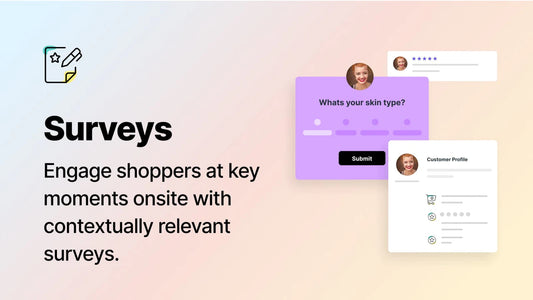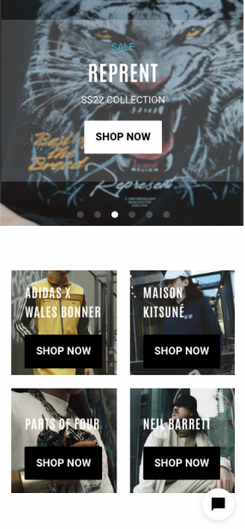Communication plays a pivotal role in engaging with customers in the digital age, and it’s crucial for businesses to understand the impact of their messages. This is where message mining comes into play.
In this blog, we’ll be exploring what message mining is, why it is important, how to run it effectively, the significance of A/B testing the copy on your website, and what you can achieve by implementing message mining techniques.
What is Message Mining?
Message mining refers to the process of analysing and extracting valuable insights from a range of communication with customers, like social media conversations, surveys, polls, one-on-one interviews, reviews, and more. It involves using natural language processing (NLP) and data mining techniques to uncover patterns, sentiments, and trends within textual data.
In layman’s terms, you’re scouring the internet for anything on your brand that others are talking about (like gossip). Using that, you can discover certain patterns, both good and bad, in how your users perceive your brand and/or product/s from which you can take actionable insights. You essentially want to know how customers talk about your brand and how your products have impacted their lives.
Why is Message Mining Important?
As we said, effective communication is the backbone of any successful business, whether eCommerce or brick-and-mortar. With eCommerce, message mining allows businesses like yours to gain a deep understanding of your customers’ preferences, pain points, and expectations. Analysing these messages exchanged with customers helps to identify recurring themes, sentiment trends, and areas of improvement.
You’ll be able to refine your messaging strategy, personalise interactions, and enhance customer satisfaction. Not only that, but you’ll be able to use all the good things customers say in your marketing copy.
For example, instead of writing a product description listing all the features of your product or spending hours trying to word the benefits, you’ll be able to find the exact product benefits that customers look for right in your product reviews.

Message mining is an excellent tool for Conversion Rate Optimisation. While many eCommerce businesses focus on design and shade, you’re probably more likely to win over those sales with the correct on-site messaging than you are by changing the shade of your CTA (unless they fail accessibility, but that’s an entirely different conversation).
How to Conduct Message Mining
There are many ways to conduct message mining, and it all depends on the purpose of your data collection. And here are four of them:
1. Conduct Visitor Surveys
These surveys are just for those who simply visit your site. When it comes to conducting a visitor survey, it’s important to implement a strategic and structured approach. Clearly define the objectives of your survey as well as what specific information needs to be collected. Some examples of this would be understanding visitor demographics, their motivations for visiting your site, satisfaction levels, expectations, etc.
You need to design a survey questionnaire that captures this information effectively, utilising a mix of multiple-choice questions, rating scales, and open-ended questions to gather both quantitative and qualitative data. Keep your survey succinct and user-friendly—remember, these customers are just popping into your site. And because they’re visitors, it may be a good place to analyse what these visitors experience and expect from your site.
2. Conduct Customer Surveys
These surveys are generally for customers who have interacted with your brand before and subscribed to your email marketing. Like with visitor surveys, you’ll need to clearly define your survey objectives and what information should be collected.
This survey is sent out through email marketing with a link inviting customers to complete a few (be specific and tell them the number) questions. You’ll want to include, like with the visitor survey, closed-ended and open-ended questions. You should even include comment boxes. You need to clearly communicate the purpose of the survey with your customers, assuring them confidentiality and providing an incentive for participation.
3. Conduct 1-on-1 Interview
This interview is more personal and empathetic. You will need to identify a representative sample of customers based on various demographics and usage patterns, dependent on the insights you’re looking for.
You will need to reach out to these customers individually and explain the purpose of the interview, highlighting how their feedback will contribute to improving products and services. Ensure to create a comfortable, non-threatening environment during the interview and allow customers to express their opinions openly.
Preparing a set of open-ended questions that cover topics such as their experiences, challenges, suggestions, and future expectations, will allow you to gain the necessary data to improve your brand. Remember to respect the customers’ time and privacy and follow up with a thank-you note or token of appreciation for their participation.
Once your surveys are complete, you will need to ‘clean’ the data by removing ‘noise’. Only include relevant information based on the goals of your survey in the beginning. Standardise your format, like in an Excel spreadsheet.
An excellent way to sift through this data is to answer questions like:
- What was the main topic of this message? [Comment box]
- What aspect of the conversion formula is being addressed in this comment? Motivation, Value, Anxiety
- What did they say? [Comment box]
- Etc.
While this will take some time, it will bring insights that will prove incredibly valuable to the long-term success of your eCommerce business.
4. Mining Reviews
Another way to conduct message mining is by going through reviews left for your products or even (gasp) your competitors. You can then “mine” for words, phrases, and benefits that your customers talk about and leverage this by mirroring this speech within product descriptions or email marketing copy.
The benefits that you perceive your customers get versus the benefits they actually get can be slightly or completely different—you may even find that your product solves a problem for your customers that you didn’t know existed.
A/B Testing On-Site Copy
A/B testing is a valuable technique for optimising website copy. By comparing two versions of a webpage or specific messaging elements, businesses can determine which variant performs better in terms of conversion rates, click-through rates, and engagement metrics.
Incorporating A/B testing into message mining allows you to refine your messaging based on real user data and preferences. By continuously testing and iterating, you can create compelling and persuasive copy that resonates with your target audience.

What You Can Achieve with Message Mining
The goals of message mining vary based on your brand and specific needs. Here are some key objectives you can achieve through message mining:
- Enhance customer satisfaction: By analysing customer messages, you can identify pain points and address them proactively. This leads to improved customer experiences and increased satisfaction levels.
- Personalise communication: Message mining enables you to understand individual customer preferences, enabling you to tailor your messaging and offers accordingly. This personalised approach fosters stronger customer relationships and increases customer loyalty.
- Optimise marketing campaigns: By analysing customer feedback and sentiment trends, you can gain insights into the effectiveness of your marketing campaigns. This allows you to make data-driven adjustments to your messaging strategy and optimise your marketing efforts.
Improve product development: Customer messages often contain valuable insights and suggestions for product enhancements. Message mining helps you to identify these ideas and incorporate them into your product development roadmap, leading to more customer-centric offerings.
What Blend Has Achieved with Message Mining
Blend worked with a Beauty Client whose overall goal was to increase the Customer Lifetime Value in their store. Naturally, we took the opportunity to test-run message mining by conducting interviews and mining reviews to change the copy of their product descriptions. One simple change to each product—shouldn’t make a huge difference, right?
Wrong.
✔ 25.12% increase in Conversion Rate
✔ 6.39% increase in Average Order Value
✔ 33.33% increase in Per Session Value
Blend & Message Mining
Message mining empowers you to gain a deeper and more comprehensive understanding of your customers, refine your messaging strategies, and enhance your overall communication effectiveness. By leveraging NLP techniques, you can uncover valuable insights hidden within customer interactions and use them to drive meaningful improvements across various aspects of your operations.
Contact us at Blend today to embrace the power of message mining and unlock the potential of your communication and propel your business to long-term success.








